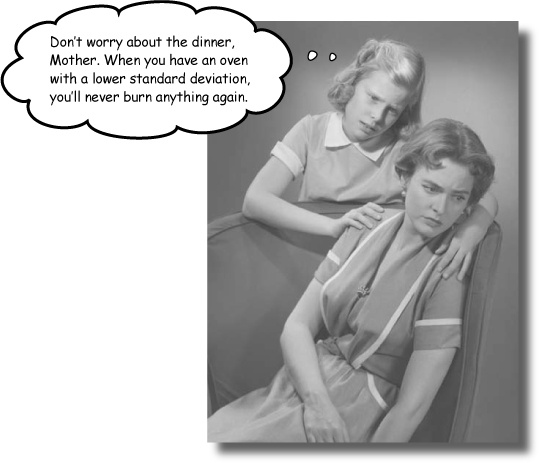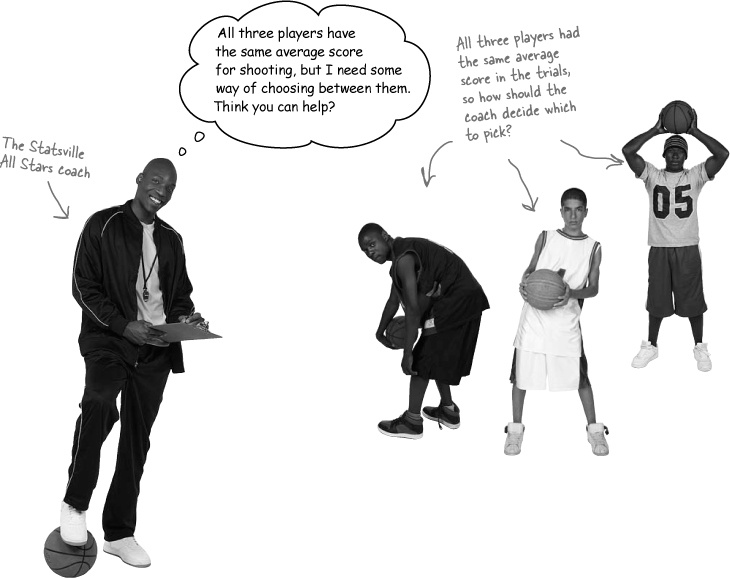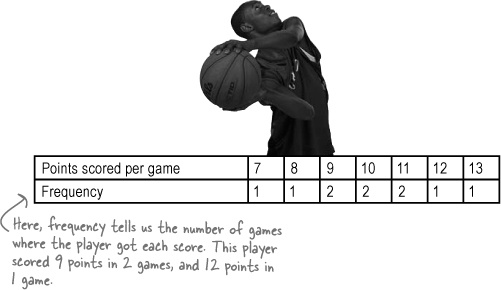Chapter 3. Measuring Variability and Spread: Power Ranges

Not everything’s reliable, but how can you tell?
Averages do a great job of giving you a typical value in your data set, but they don’t tell you the full story. OK, so you know where the center of your data is, but often the mean, median, and mode alone aren’t enough information to go on when you’re summarizing a data set. In this chapter, we’ll show you how to take your data skills to the next level as we begin to analyze ranges and variation.
Wanted: one player
The Statsville All Stars are the hottest basketball team in the neighborhood, and they’re the favorite to win this year’s league. There’s only one problem—due to a freak accident, they’re a player down. They need a new team member, and fast.
The new recruit must be good all-round, but what the coach really needs is a reliable shooter. If he can trust the player’s ability to get the ball in the basket, they’re on the team.
The coach has been conducting trials all week, and he’s down to three players. The question is, which one should he choose?

We need to compare player scores
Here are the scores of the three players:

Each player has a mean, median, and mode score of 10 points, ...
Get Head First Statistics now with the O’Reilly learning platform.
O’Reilly members experience books, live events, courses curated by job role, and more from O’Reilly and nearly 200 top publishers.

